Polygonum achoreum (Striate Knotweed) - photos and description
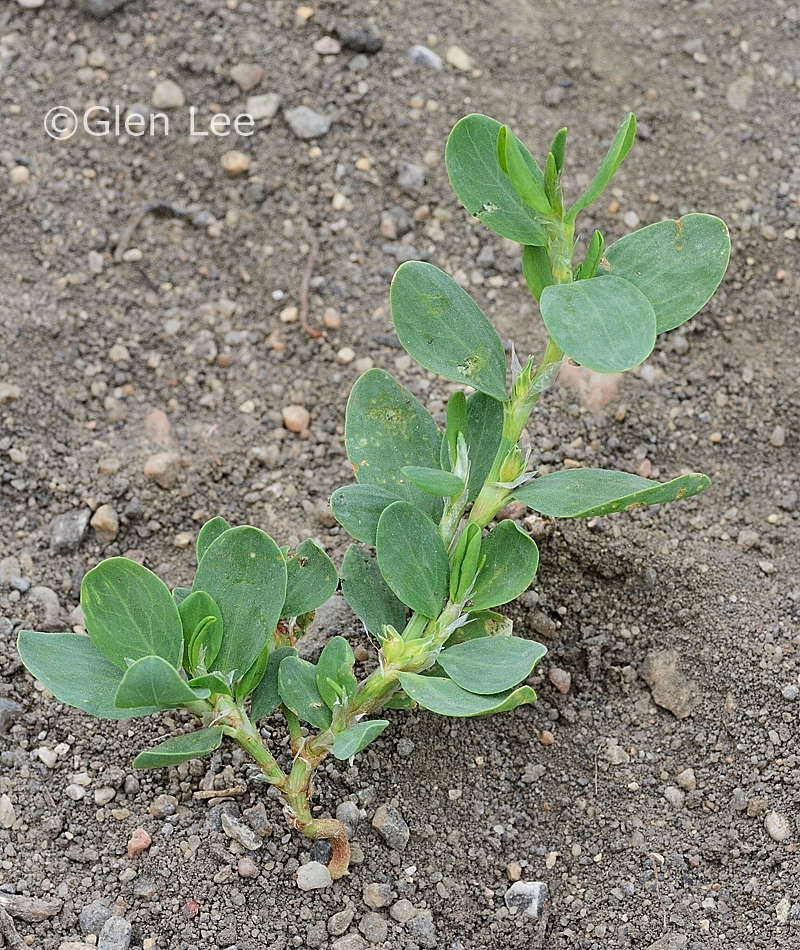
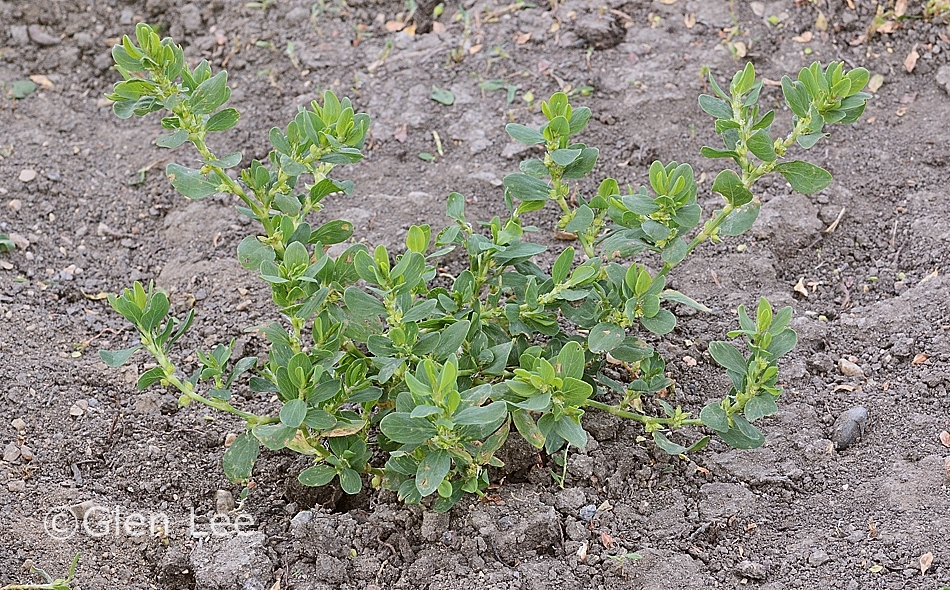
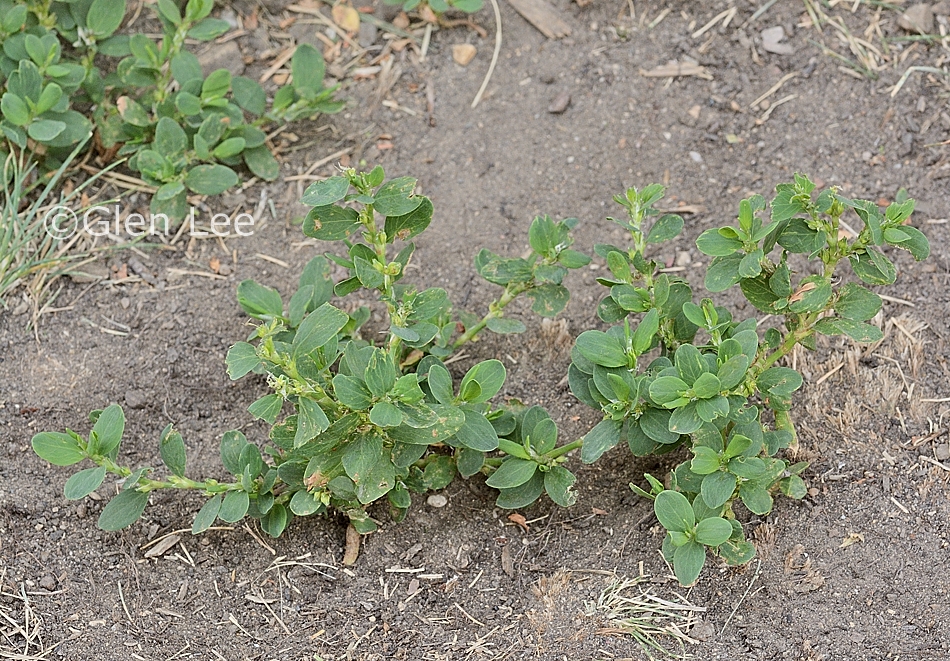
Two plants side by side in above photo
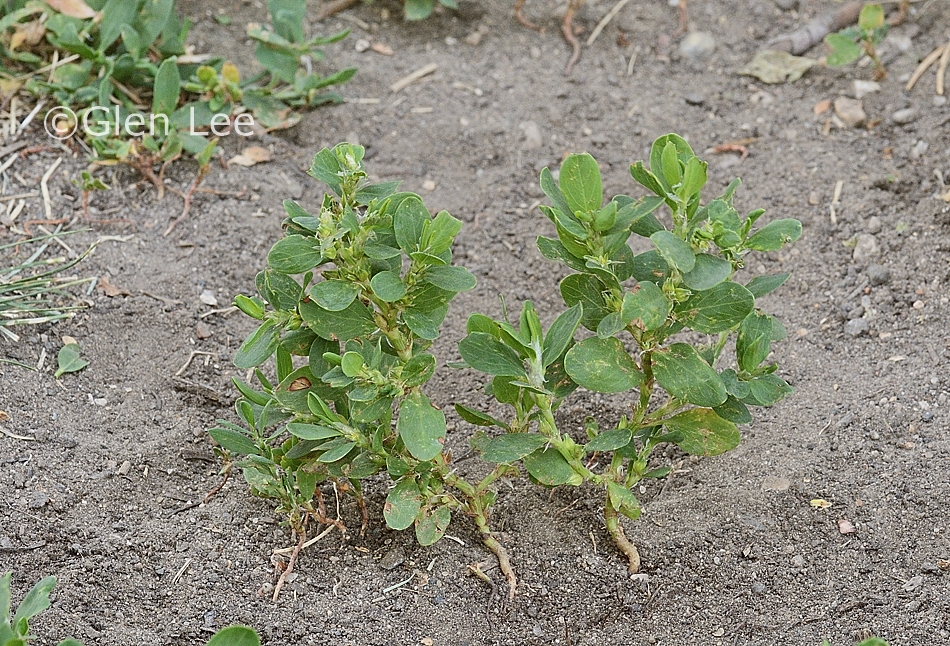
Two plants side by side in above photo
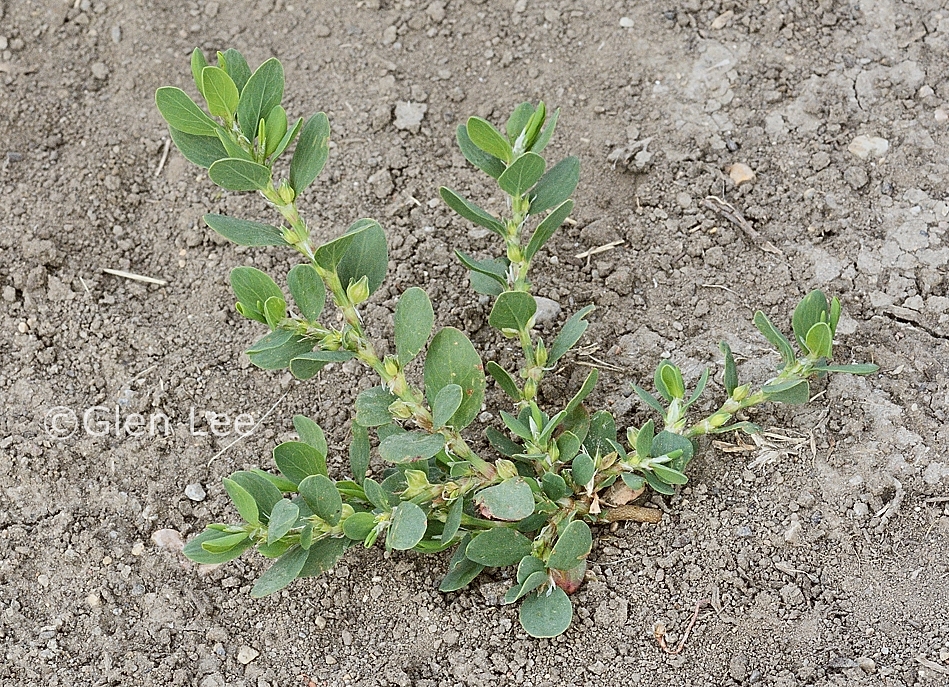
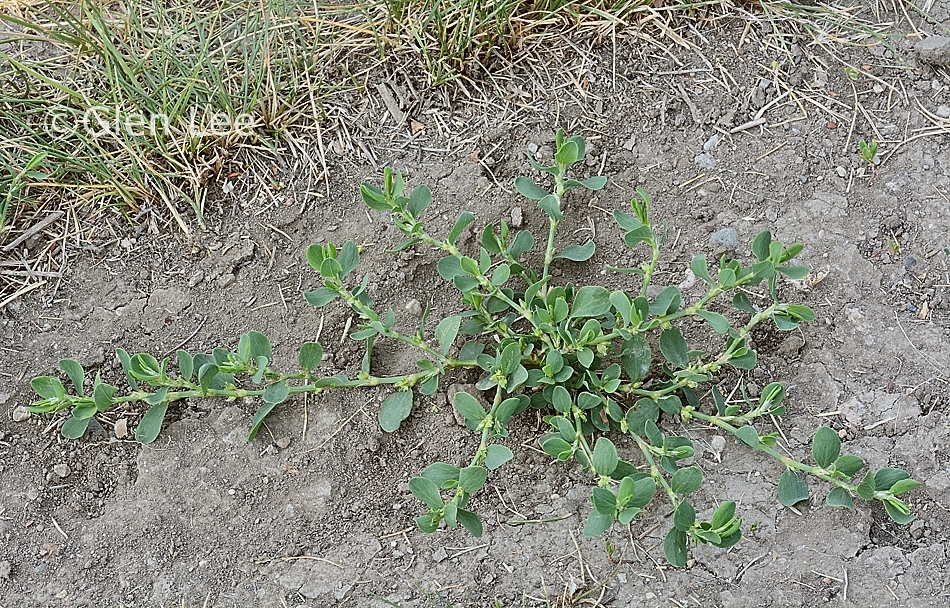
Occasionally / rarely this plant can have a prostrate growth habit
as shown above
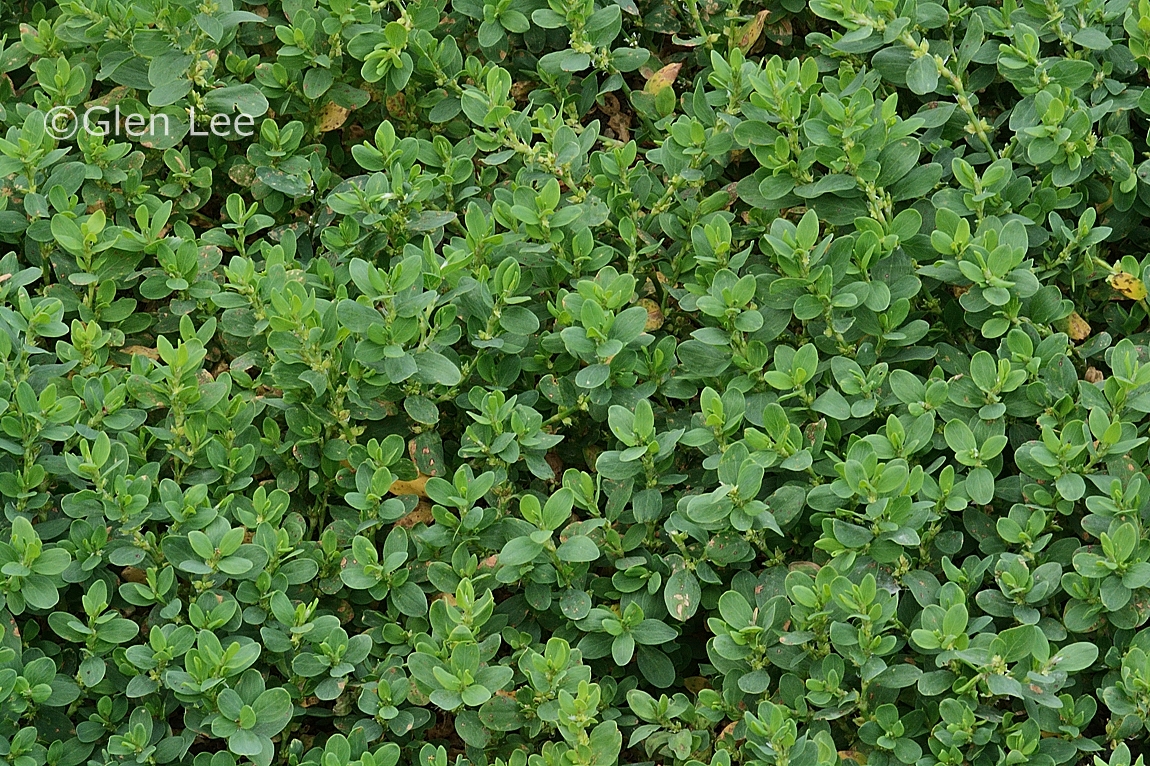
Patch of many plants
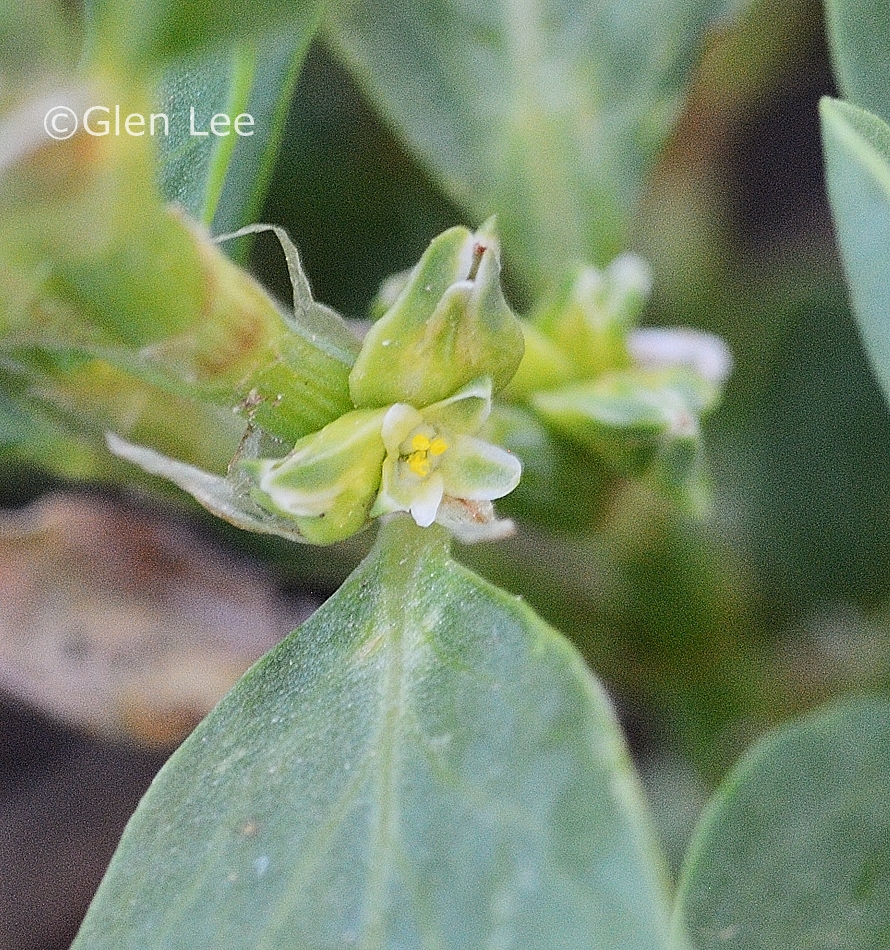
Flowers greenish-white, 2 mm diameter, growing in leaf axils
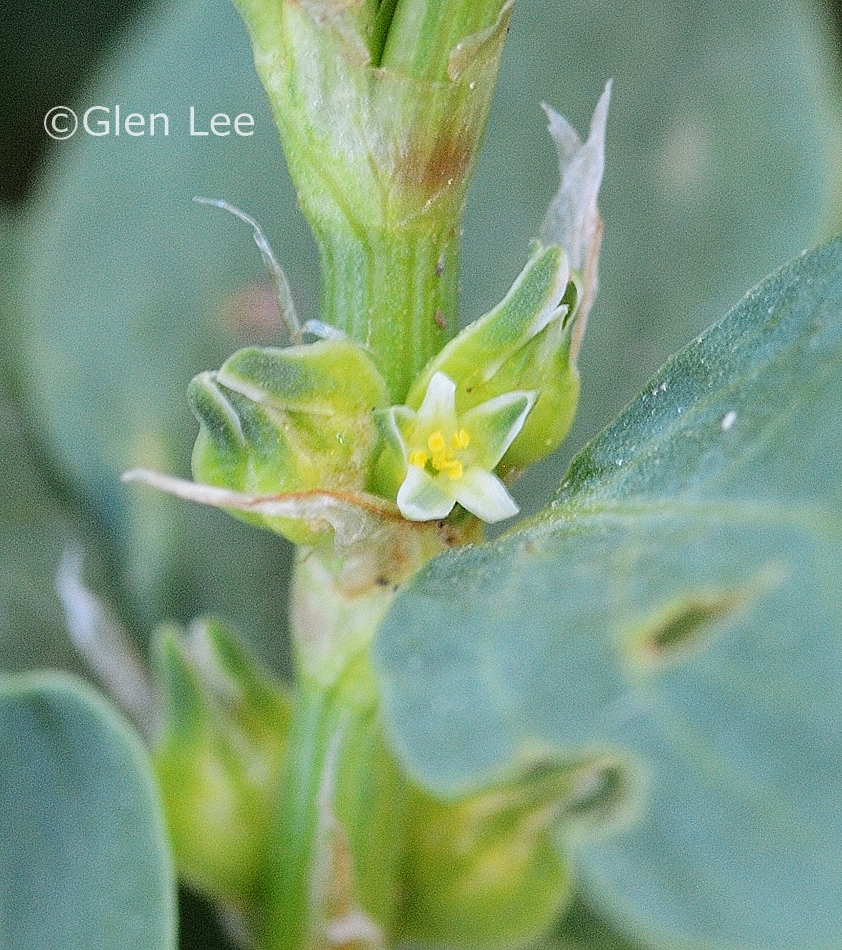
Flowers greenish-white, 2 mm diameter, growing in leaf axils
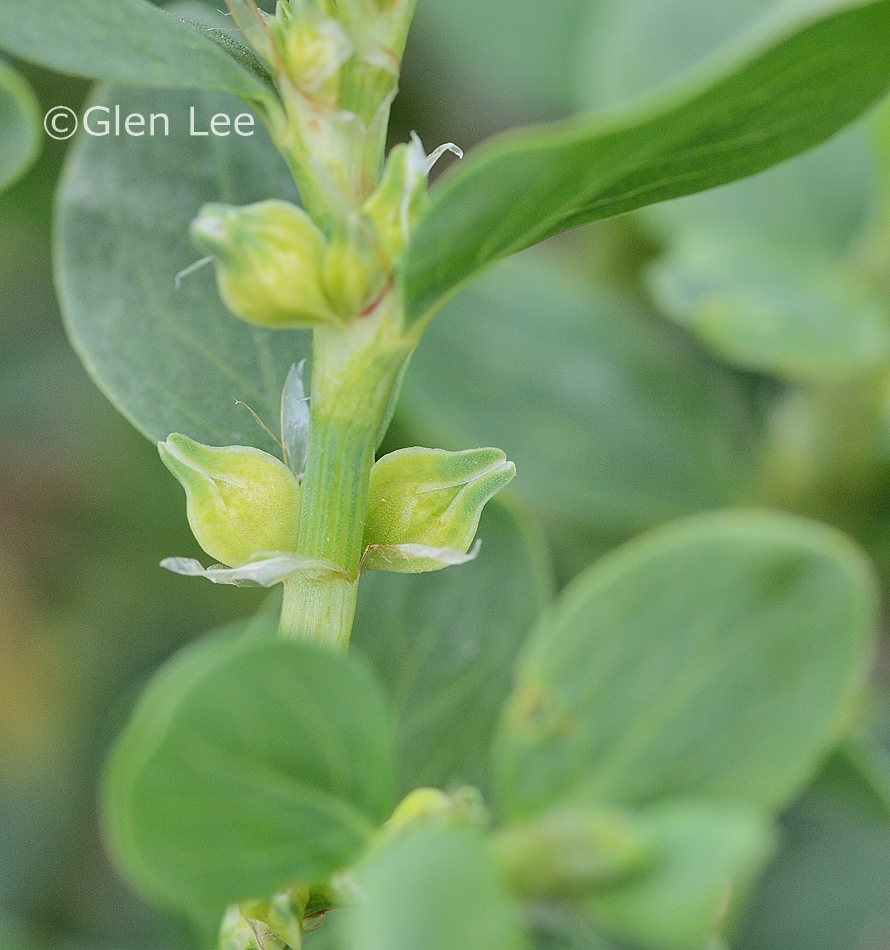
Calyx bottle-shaped, sepals yellow-green
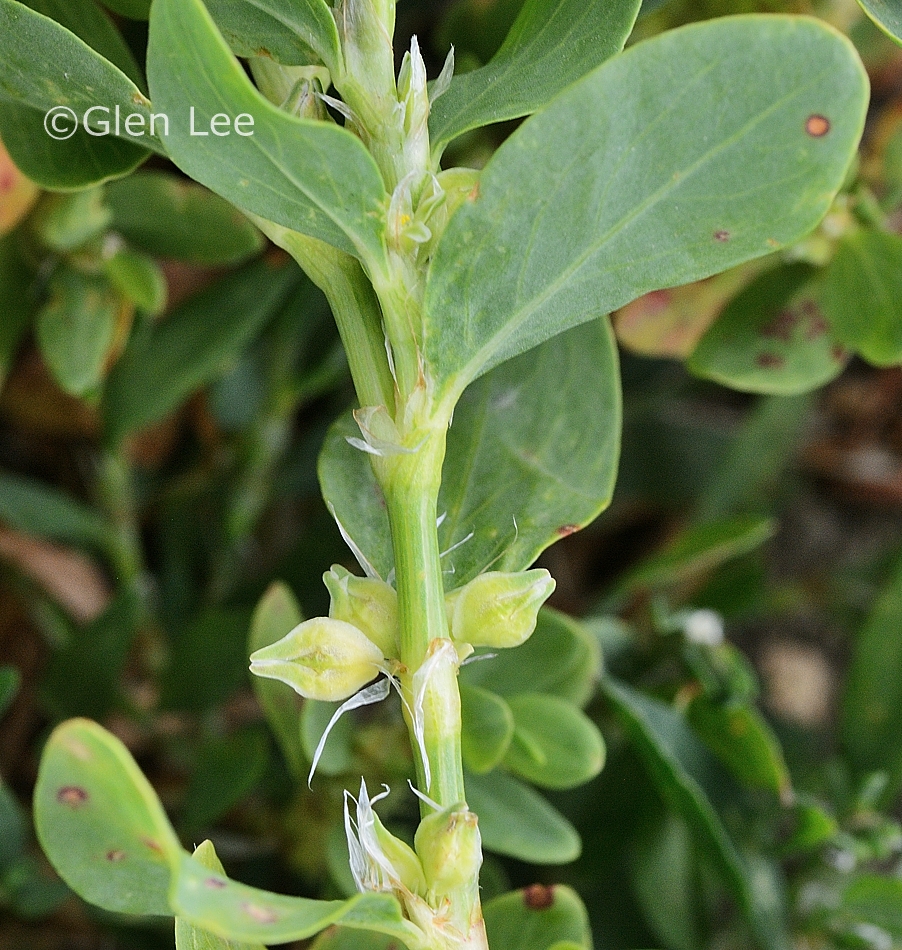
Calyx bottle-shaped, sepals yellow-green
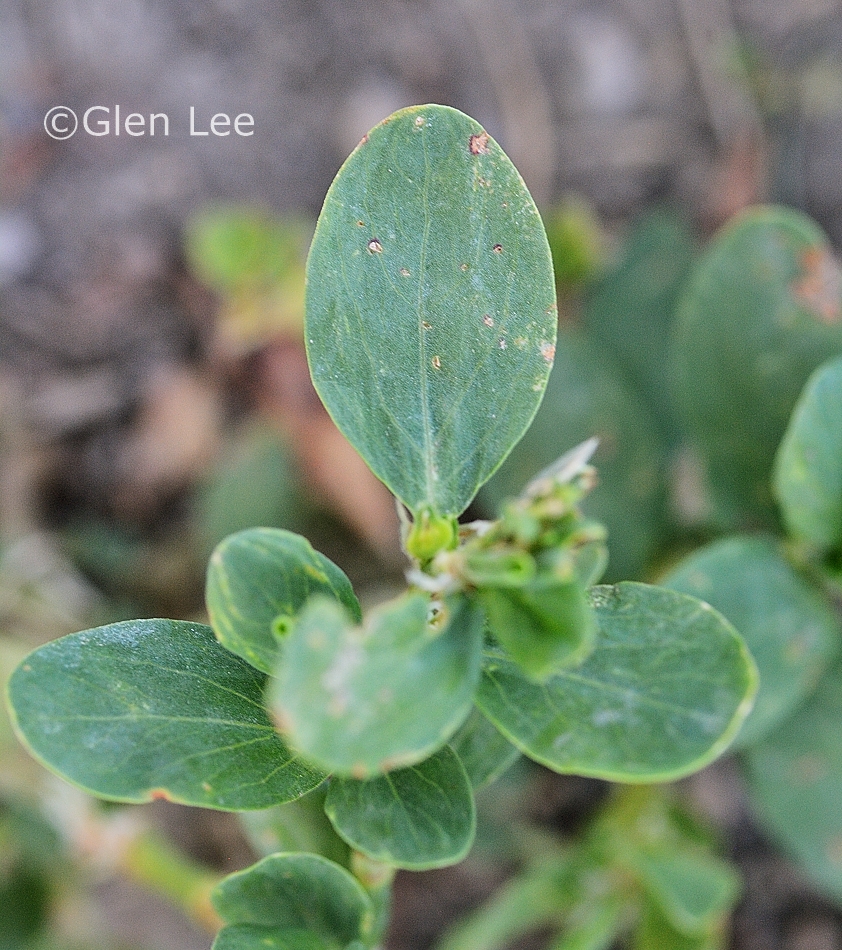
Origin: Native.
General: Low, leafy plants with a decumbent to erect growth habit, branching from near the base. Foliage is medium to dark green, often with white powdery mildew. The plants can form mats of many plants. Stems have some green striping. Plants glabrous.
Flowers: Flowers in small clusters in leaf axils, greenish-white, very small - only 2 mm diameter.
Leaves: Leaves are alternate, not reduced along the stem, oval to obovate, with short petioles. We measured a leaf at 11 mm long by 9 mm wide.
Height: Height listed in Budd's Flora to 50 cm, we measured plants to 21 cm tall.
Habitat: Bare soil in waste places, edges of lawns, lakeshores.
Abundance: Very common.
Synonym: Listed in some of the field guides we use as Polygonum erectum.
Similar species: This plant is similar to Polygonum aviculare which can often be found growing alongside P. achoreum. To distinguish between them:
- Leaf shape: the leaves of P. achoreum are much wider (ovate to obovate), while P. aviculare are much narrower (oblong to narrowly lanceolate). This is the easiest and I think a reliable way to distinguish between these plants.
- Growth habit: the growth habit of P. archoreum is mostly decumbent to erect (rarely prostrate), while the growth habit of P. aviculare is mostly prostrate and rarely decumbent to erect.
- Leaf colour: the leaves of P. achoreum are medium green to dark green, while the leaves of P. aviculare are bluish-green. This is open to interpretation, but I find it generally works.
- Several taxonomic keys list the perianth of P. achoreum connate (united) to above the middle, whereas the perianth of P. aviculare is connate to about the middle. The perianth of these plants are only 3 to 4 mm long, and I find I go cross-eyed looking through a loupe trying to decide if the perianth is united to about the middle or slightly above the middle. I haven't found this useful, instead I just look at the shape of the leaves.
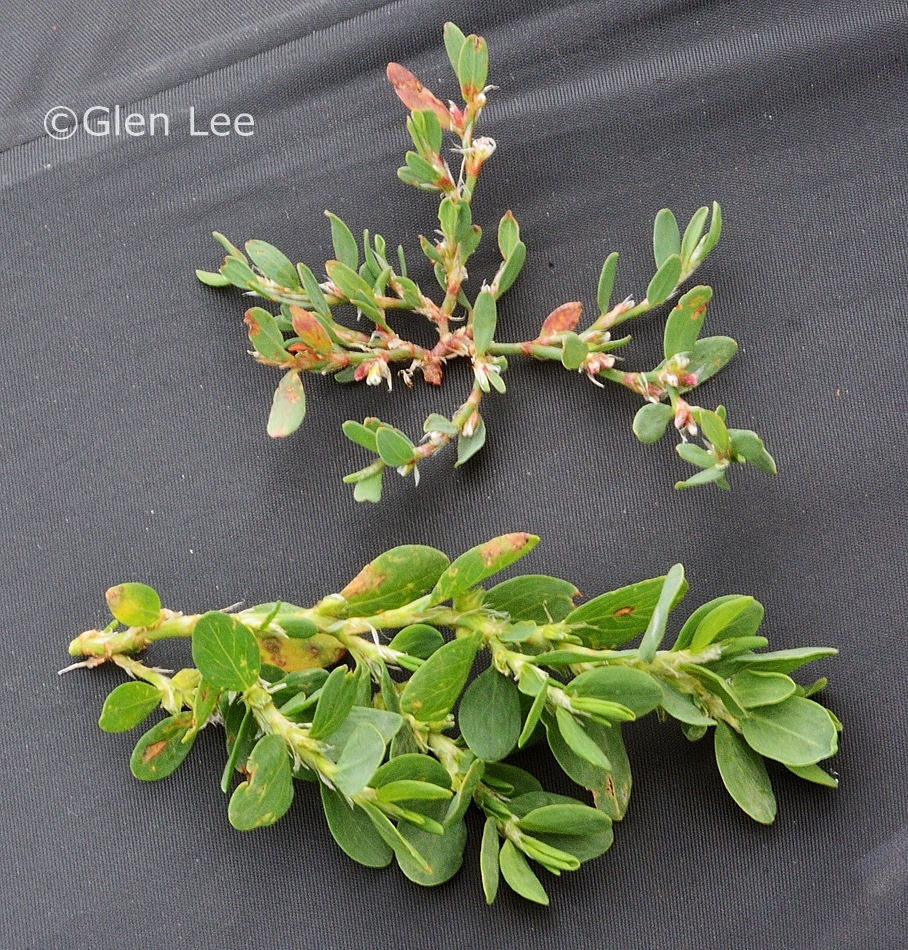
Top: Polygonum aviculare Bottom: Polygonum
achoreum
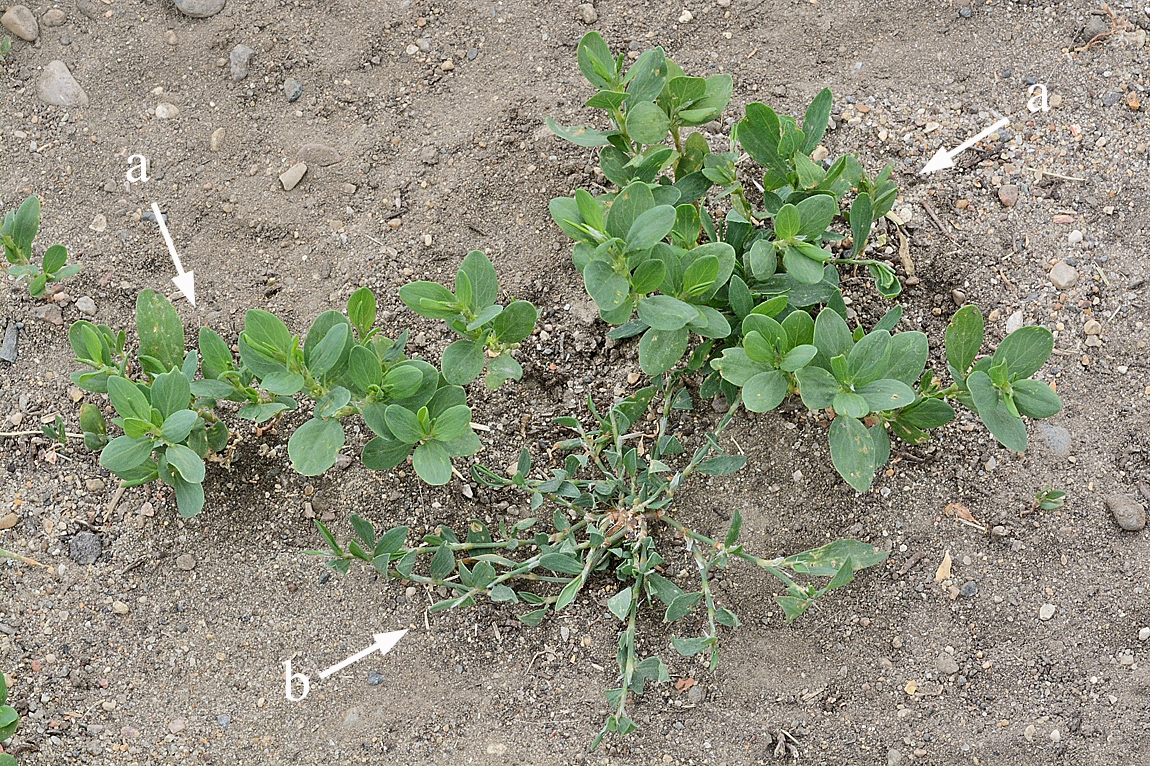 a:
Polygonum achoreum b: Polygonum
aviculare
a:
Polygonum achoreum b: Polygonum
aviculare
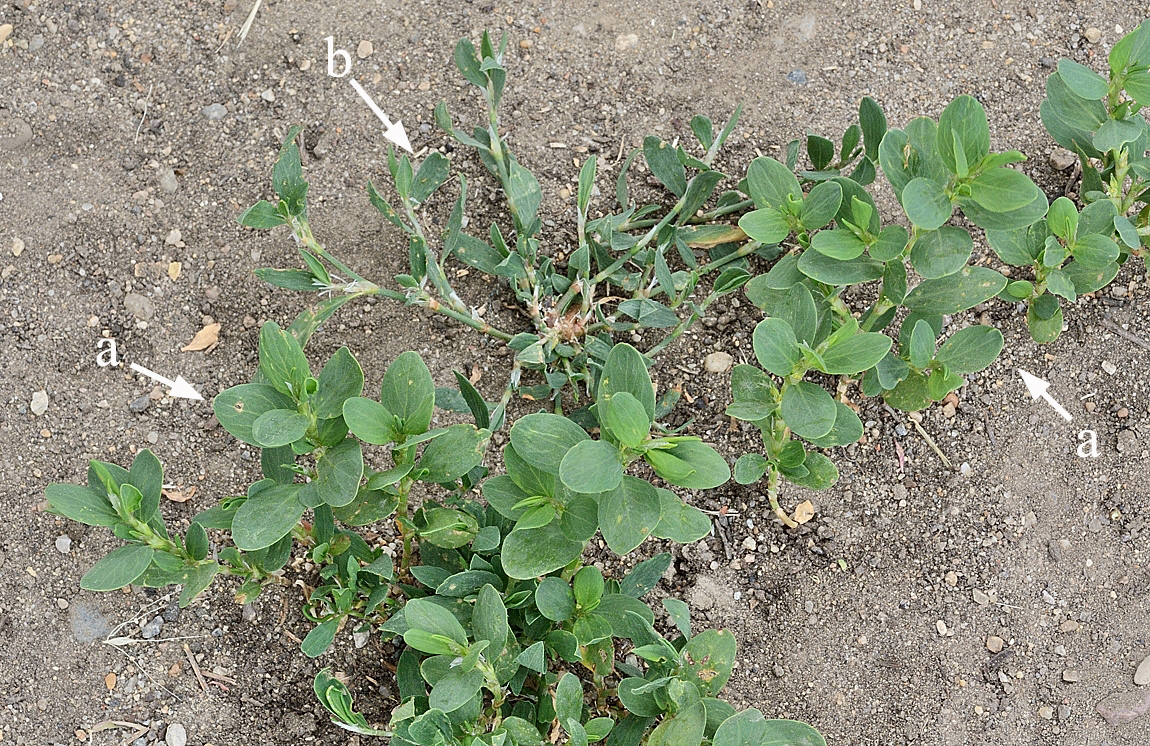
a: Polygonum achoreum b: Polygonum
aviculare
When and where photographed: The above photos were taken June 29th, July 8th, and July 15th along a dirt roadway in a city park in Regina, SK.